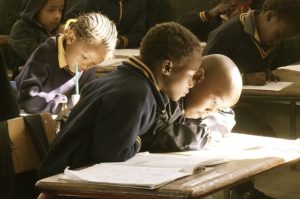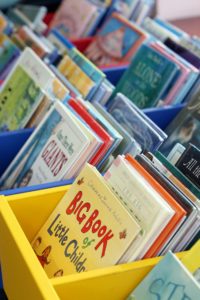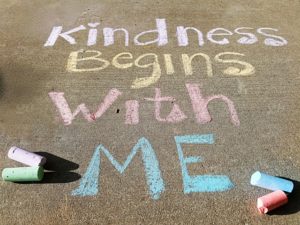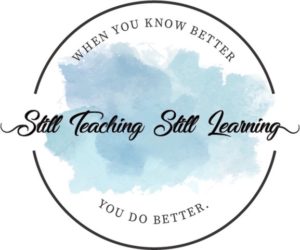
I am officially on winter break and enjoying my family and our Christmas traditions.
I’ve been thinking about how much classroom routines are really all about traditions.
No matter what holiday you celebrate, you and your family probably have several traditions that are significant to you. From food to decorations to activities you do at this time of year, traditions matter and make your holiday celebrations more meaningful.
Traditions matter in classrooms and schools as well. These traditions, or rituals, make our classrooms and schools feel safe and connected and they build community between students and teachers. The predictability of these traditions and rituals empowers our students to learn, collaborate, and manage their own behavior (always the goal!).
“It is significant to realize that the most creative environments in our society are not the ever-changing ones. The artist’s studio, the researcher’s laboratory, the scholar’s library are each kept deliberately simple so as to support the complexities of the work in progress. They are deliberately kept predictable so the unpredictable can happen.” ~Lucy Calkins
I was recently reminded of the importance of our classroom traditions. Our school in North Carolina was closed for three days due to snow. My students enjoyed the unexpected break and their snow days, but were equally excited to be back together again in our classroom. I would love to tell you that it’s all because of me! But no – it’s not about me. They were happy to be back together because of the social nature of school and because of the traditions of our classroom. I know this, not just because of the level of chatter about the snow days, but because of the questions they asked.
“Are we going to continue reading Amal, Unbound?”
“Are we going to do brags & drags at circle today?”
“Are we going to have extra writing time today?”
“Is our reading group going to meet today?”
Traditions can be started at any time of the year. In this post, I’ll share some of our class’s favorite traditions. I hope that they give you some ideas for traditions you can begin in your classroom, possibly right after your winter break!

One of the most powerful traditions we can implement in school is to “see” every one of our students by greeting them at the door. Our school has adults stationed for “morning duty” at the doors where students are entering the building from the bus circle or from cars. They greet every student with a smile, saying “good morning” and using the student’s name in their greeting.
When students enter our fifth grade classrooms in the morning, my team of teachers does the same. We greet every student with a hug, handshake, high five or fist bump — whatever the student chooses. When we change classes for math and science, we greet those students at the door as well.
It sounds like a simple thing, but it makes a huge difference in getting the day started on the right note. By looking students in the eye and by greeting them, I can tell a lot about what is going on with them that morning. If a usually cheerful student is more gloomy, I can pull them aside and ask how they’re doing. If a student who is more “high energy” (translate that however you choose!) is bouncing down the hall, we can gently remind them about expectations, assure them that we are happy to see them, and redirect them in a positive way.
Greetings matter. Really “seeing” kids and what they bring to school matters.
“It’s difficult to learn from someone we don’t trust. Years ago, esteemed New Zealand educator Don Holdaway noted, ‘You don’t have to love every student, but you do need to bond with each one of them if they’re to learn anything at all.'” ~Regie Routman
Another way to “see” our kids and to learn more about what they’re thinking is to use dialogue journals.
I give each student a journal and some classroom time each week to write a letter to me in their journal. I then spend a few minutes every day during the next week responding to each child’s journal letter. I started this journal procedure because of the busy-ness of a school day. I often wondered if I was really getting to know every single one of my students. I believed that using journals would give my students private “time” with me, by communicating with me in writing. It has been invaluable.
Most students write more than one letter a week, sometimes venting about something that has happened with another student and sometimes letting me know about something else that is going on with them.
If a student tells me something that I believe needs more of a conversation, I tell them that we will talk about it and then I schedule a time in my planner to meet with them privately.
I learn so much from these journals — about their insecurities and doubts, about happy things that have happened to them, about their lives outside of school. The book I Wish My Teacher Knew by Kyle Schwartz describes this process. Yes, the journals take some time and add one more thing to my to-do list, but it is truly valuable in connecting me to my students.

A tradition that I enjoy — and one that also bonds me to my students — is attending their athletic events or other activities outside of school.
At the beginning of the year, my fifth grade team sends a letter home explaining that we want to get to know our students outside of school and asking parents to share important dates or athletic schedules. We then make every effort to attend at least one event for each student.
Seeing our kids “shine” in other ways adds to our understanding of them as individuals. It also helps us to incorporate that student’s interests into the curriculum.

Having a predictable routine for starting class is another important tradition. While I am greeting students at the door, my students are unpacking, making lunch choices, and checking the board for their morning work assignment. Depending on your situation, it might be helpful to have a “do now” or a written assignment posted that students complete before class begins. At our school, we have some intervention groups and music/art groups that meet in the morning. That makes it difficult to have a “required” assignment since some students will not have the same amount of time to complete the task. So I compromise with “soft starts”, an idea I learned from Harvey Daniel’s book The Curious Classroom, by posting tasks for students to complete that can also be done at other times in the day. For example, I use Padlet for whiteboard messages. See my Pinterest board for examples of whiteboard messages. Students are always eager to add to the Padlet wall and to see what other students are posting. Just like anything else, if you use this idea, you will need to set your own ground rules (what is appropriate to post, if they can use photos or not, etc.). Another morning assignment is to have students write in their dialogue journals. We also use this time to “shop” for books in our classroom library and to add book titles to their reading lists.

One of our favorite new traditions is a daily

When the tardy bell rings, signaling the “official” start to the day, we gather on the carpet. Even this procedure has traditions to it! While taking attendance, I quickly greet every student again, emphasizing that I’m glad they are here. We preview our schedule for the day, and I often add a quick additional comment about what we will be doing during different subjects. Our school has “morning news” or announcements on video, so we watch that during this time. We end our carpet gathering time with a “precept” from 365 Days of Wonder or with what we call “sunny thoughts” (positive thoughts for the day, or affirmations). If we have a behavior goal that we are working toward (making quick transitions, for instance), we review our goal.
At the beginning of the year – and whenever we feel a need to “reset” – we set up or revisit our classroom rules. We call them “norms” as a more positive way to describe the “normal” ways we will treat each other. Some of our important norms are that we will listen to everyone’s voice and point of view, we will respect what others share, we will only make positive or helpful comments. After listing our norms, we all sign the chart (including teachers).

Other traditions that keep our classroom running smoothly and make everyone feel “safe” include having procedures for how we do “business” in our classroom.
We have rules for when to use the pencil sharpener, how to return books to the classroom library, where to turn in completed work, where classroom supplies are located, class jobs, restroom use, small group work, and clean up/pack up for afternoon dismissal.
These sound like small things, but the very predictability of those routines and procedures help everyone to know what to do and when it is okay to do what. When some routine or procedure is not working well, we discuss it either during our morning business time, or at our restorative circle time.
Speaking of restorative circles – our school and district are implementing restorative circles as part of Restorative Practices training. You can read more about it HERE and HERE.
Circles are only one part of the entire Restorative Practices implementation. I have found them to be a very powerful part of our classroom community building and an important tradition for our class.

Circles can be done any time of the day, but I like to have a predictable time for them. (I’m seeing a pattern here with my love of predictability!)
I would prefer to do a circle at the beginning of the day, but our morning schedule is a little rushed due to having specials classes first thing in the morning. So we do our morning “business” (see above) during the morning gathering time, and save our circle work for after lunch.
Meeting in a circle after lunch helps us all “reset” from any recess and lunch issues and helps us refocus for the afternoon content block in our class.
The procedure for the circle is simple. We all sit in a circle, including the teacher. This puts everyone on the same “level”, so to speak, and helps us to look at and talk with each other, rather than directing all of our comments or sharing at the teacher.
We use a stuffed animal as a “talking object”, but you could use any object you choose. This helps us focus on the fact that the person holding the stuffed animal is the only voice we should be hearing at the moment.
We have set guidelines, or norms, for our circle. We focus on the speaker & avoid side conversations. We sit respectfully (in our own space, in other words!). If we don’t choose to share, we can pass to the next person. You could set whatever norms you think are appropriate for your grade level.
When we gather in a circle, we do several different things. I try to vary these from day to day. For instance, on Monday we share “brags & drags” from the weekend. Brags include anything positive that you want to share and drags include anything that was a “drag” on the weekend. I usually start, just to get the conversation going. For this type of circle, we just go around the circle (a “sequential circle”) and share. Students can pass if they do not choose to share (see our guidelines above). Edutopia has a great post about this, calling the procedure “roses & thorns”.

We use our circle time to share other information about ourselves, including what books we are reading right now (similar to “status of the class” for Nancie Atwell fans), what is challenging us right now, what is frustrating us. For these topics, we do a “nonsequential circle”. Any student who wants to share can do so, and we pass our talking object to the next person who wants to share instead of going around the circle.
We use circles to solve problems by discussing what the problem is, when it is occurring, and suggestions for solving the problem. Sometimes this involves discussing other students’ behavior choices.
While I keep a tight rein on not letting this become a time of “piling on” and blaming, I do emphasize that we are sharing frustrations out of caring about each other and wanting everyone to do and be their best in our class. (I would not recommend the problem solving behavior choices discussions until your classroom community is well established and everyone feels “seen” and loved.)
At the end of a month, we do our favorite circle strategy. We stand in a circle for this one. First, we introduce the person to our right and we share something that we admire most or appreciate about them. After everyone has been introduced in this way, we reverse the circle. This time, we say something about the person on our left with the following prompt: “One word that I think of when I look at _____ is _______.”
A favorite tradition at the end of the day is sharing three A’s. The three A’s are appreciate, apologize, or a-ha. Students can thank, or appreciate someone in the class for something specific, or they can choose to keep the reason for appreciation private. They can apologize to someone, or to the whole class. Again, they do not have to share the reason. For an a-ha, students can share something they learned or figured out or completed that day. This tradition is always a positive way to end the day and my students complain if we are rushed and I suggest skipping it!

After our three A’s time, as we leave the classroom, I personally say goodbye to every student before we head out to buses and car circle lines. Just like with the morning greetings, I say goodbye with a hug, handshake, high five or fist bump.
I hope that you have found an idea for a new tradition you can implement in your classroom. Right after winter break (or any break) is a great time to introduce new traditions or routines. I would love to hear about your own classroom traditions!
